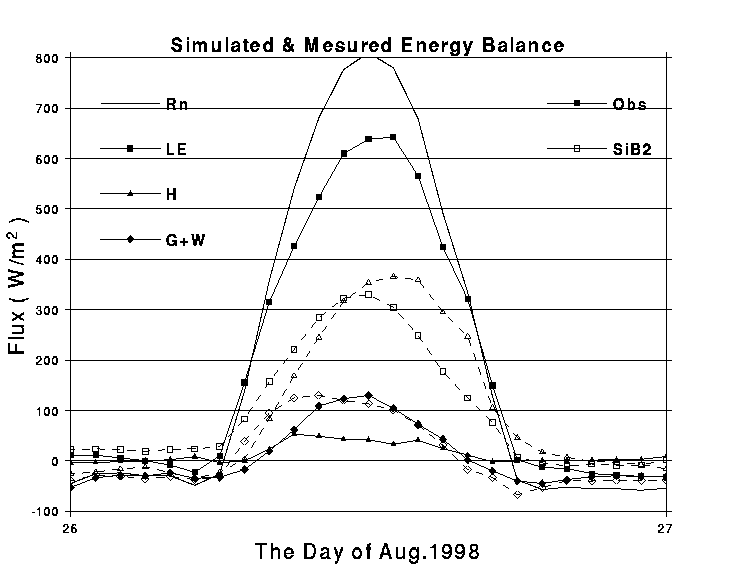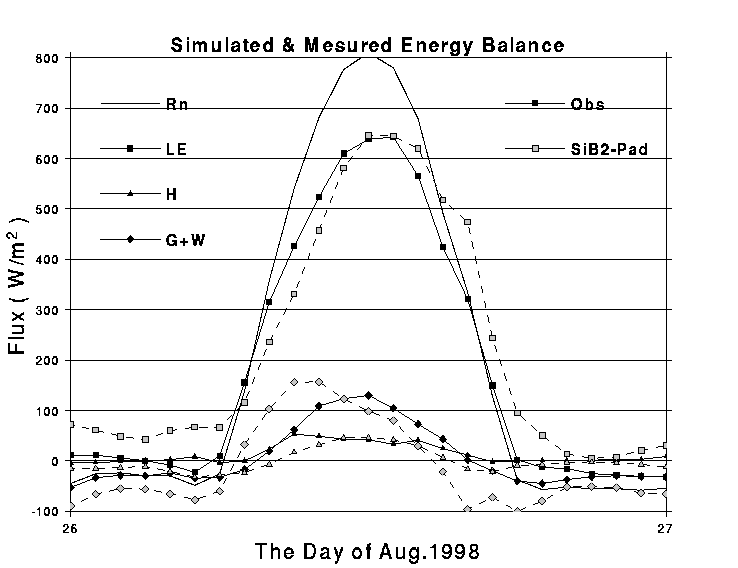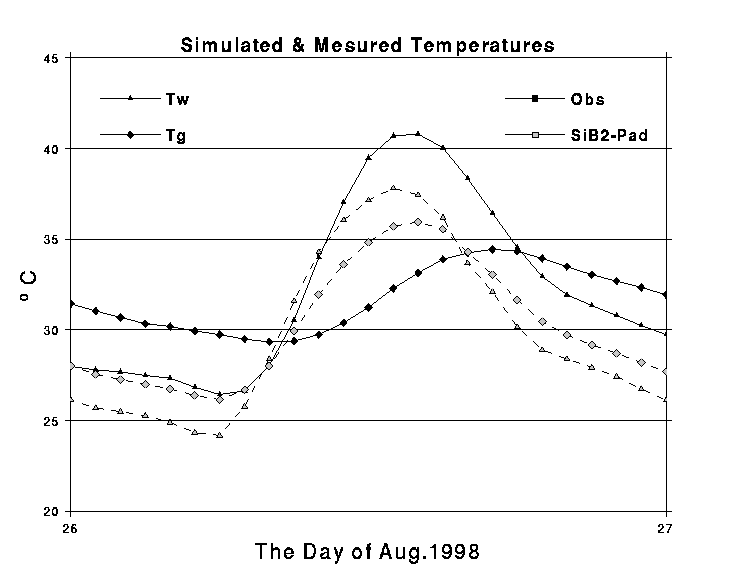|
In order to make up for these defects,
SiB2-Pad in which water body is taken into account was developped and
applied. As a result, the simulation of the latentheat flux was improved
significantly.(fig.2)
Ground surface temperature was estimated fairly well, but during nighttime,
water temperature was underestimated. Canopy temperature was also lower
than observation during nighttime. As a result, slight underestimation
of lE in the morning was not improved.
Additionally, canopy temperature was sometimes overestimated in the
simulations, that caused underestimation of lE. (fig.3)
In order to avoid the underestimation, it was
necessary to adjust a parameter representing dependency of
stomatal-conductance on leaf temperature.
|


